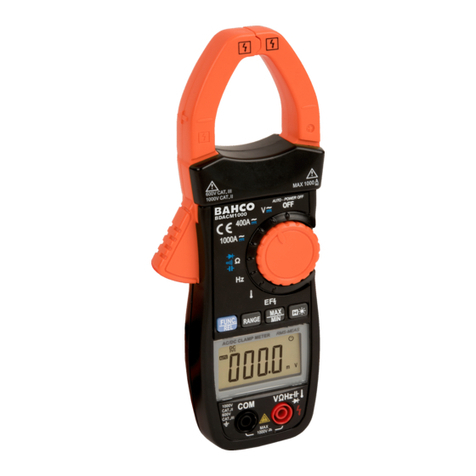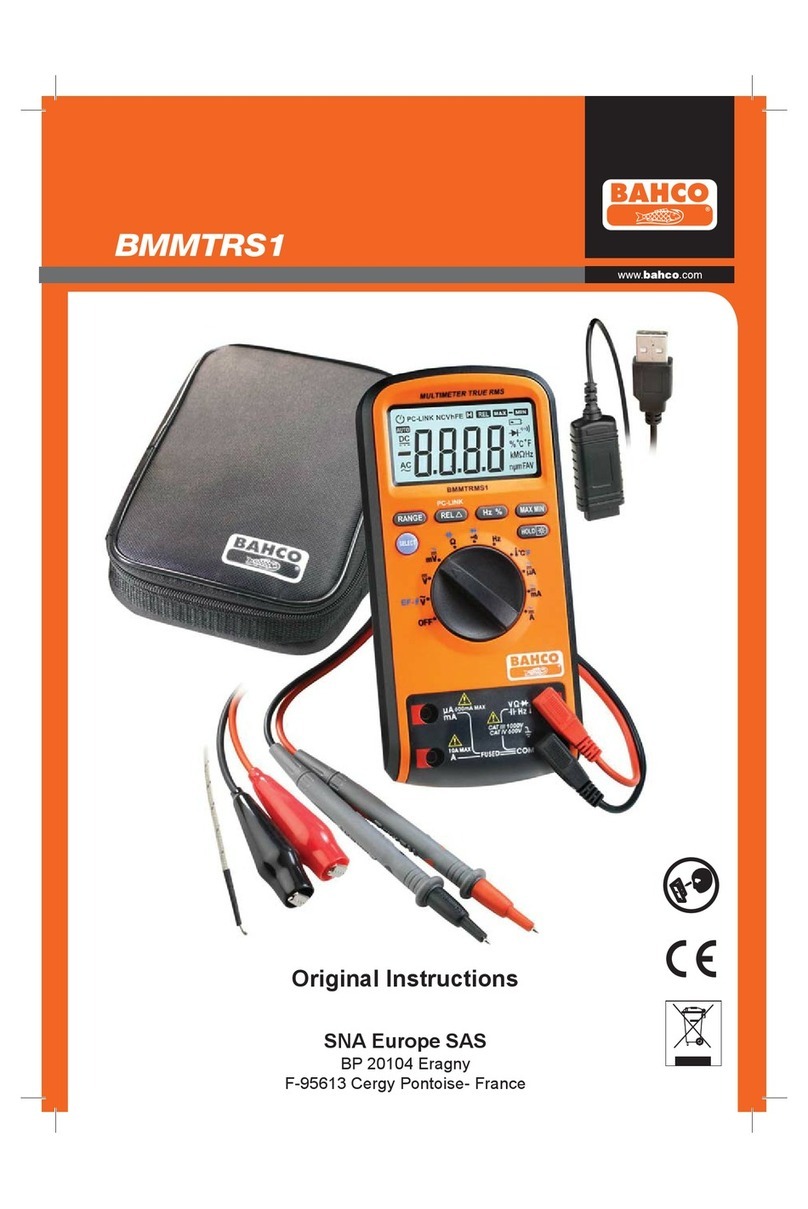
4
BMMTRS1
ENGLISH
• Do not operate the meter around explosive gas, vapor, or dust.
• Verify a Meter’s operation by measuring a known voltage. Do not use the Meter if it operates abnor-
mally. Protection may be impaired. When in doubt, have the Meter serviced.
• Uses the proper terminals, function, and range for your measurements.
• When the range of the value to be measured is unknown, check that the range initially set on the
multimeter is the highest possible or, wherever possible, choose the auto-ranging mode.
• To avoid damages to the instrument, do not exceed the maximum limits of the input values shown
in the technical specication tables.
• When the multimeter is linked to measurement circuits, do not touch unused terminals.
• Caution when working with voltages above 60Vdc or 30Vac rms. Such voltages pose a shock
hazard.
• When using the probes, keep your ngers behind the nger guards.
• When making connections, connect the common test lead before connecting the live test lead; when
disconnecting, disconnect the live test lead before disconnecting the common test lead.
• Before changing functions, disconnect the test leads from the circuit under test.
• For all dc functions, including manual or auto-ranging, to avoid the risk of shock due to possible
improper reading, verify the presence of any ac voltages by rst using the ac function. Then select
a dc voltage range equal to or greater than the ac range.
• Disconnect circuits power and discharge all high-voltage capacitors before testing resistance, con-
tinuity, diodes, or capacitance.
• Never perform resistance or continuity measurements on live circuits.
• Before measuring current, check the meter’s fuse and turn off power to the circuit before connecting
the meter to the circuit.
• In TV repair work, or when carrying out measurements on power switching circuits, remember that
high amplitude voltage pulses at the test points can damage the multimeter. Use of a TV lter will
attenuate any such pulses.
• Use just one 6F22 battery, properly installed in the Meter’s battery case, to power the Meter.
• Replace the battery as soon as the battery indicator ( ) appears. With a low battery, the Meter
might produce false readings that can lead to electric shock and personal injury.
• Do not measure voltages above 1000V in Category III, or 600V in Category III installations.
• When in REL mode, the “REL” symbol is displayed. Caution must be used because hazardous
voltage may be present.
• Do not operate the Meter with the case (or part of the case) removed.
1.2 Symbols
Symbols used in this manual and on the instrument:
CAUTION:refer to the instruction manual.
Incorrect use may result in damage to the
device or its components.
AC (Alternating Current)
DC (Direct Current)
AC or DC
Earth ground
Double insulated
Fuse
Conforms to European Union directives






























